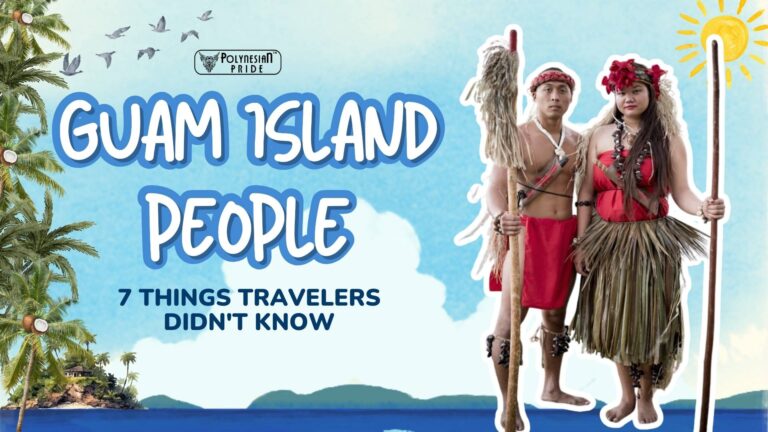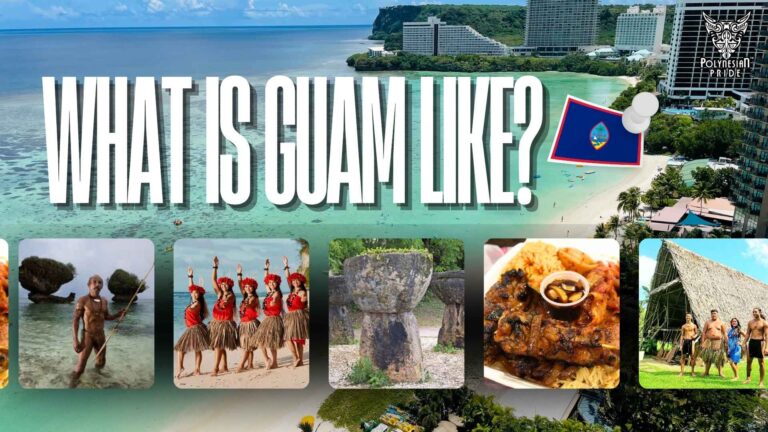Papua New Guinea People: 12 Awesome Things Will Blow Your Mind

INTRODUCTION
Papua New Guinea is a country of remarkable diversity, home to a rich tapestry of cultures, languages, and traditions. With over 850 indigenous languages and 600 distinct tribes, the Papua New Guinea native people represent one of Earth’s most varied and fascinating populations. This article explores 15 unique aspects of the Papua New Guinean people, delving into their customs, social structures, and challenges in the modern world.
1. Papua New Guinea People Have 850 Languages & 600 Tribes

Linguistic Diversity
Papua New Guinea has over 850 languages. This makes up about 12% of the world’s languages. Most of these languages have fewer than 1,000 speakers. The country’s rugged terrain and dense forests have kept many ethnic groups in Papua New Guinea isolated. This isolation has helped preserve many languages. Cultural practices also support the maintenance of distinct languages. Low population density allows small communities to keep their unique linguistic traditions.
Tribal Variety
Papua New Guinea is home to more than 600 tribes. Each tribe has its own customs and often its own language. Tribal affiliations are crucial in social and political life. Many tribes have traditional leadership structures. They also have unique rituals, ceremonies, and social norms. Art, music, and dance styles differ among tribes. However, inter-tribal disputes are common in Papua New Guinea.
For more details about Papua New Guinea tribes, check out: Papua New Guinea Indigenous People
2. Women’s Power: Matrilineal Communities in Papua New Guinea

Understanding Matrilineal Societies
Matrilineal societies in Papua New Guinea showcase distinctive traits. Property rights and inheritance are traced through the female line, with women traditionally managing land, an esteemed and essential asset. This practice contributes to their higher social status than those in patrilineal societies, underscoring their pivotal roles in economic and social spheres.
Land Ownership and Economic Influence
Within these communities, land titles pass from mothers to daughters, ensuring economic stability and preserving familial heritage. Women have authority over land allocation among family members and wield significant economic and social influence.
The Significance of Land in Papua New Guinea
The land holds great importance in Papua New Guinea. It supports livelihoods through subsistence farming and allows for the cultivation of cash crops. Many customs and rituals deeply intertwine with specific lands, enriching community culture. Land ownership correlates with social status, bolstering women’s standing in matrilineal societies.
3. Wantok Systems Is A Vital Structure Of Papua New Guinea People

What is the Wantok System?
“Wantok” originates from the Tok Pisin language, meaning “one talk” or people who share a common language or kinship in Papua New Guinea culture. This system operates as a robust social safety net, providing mutual support and fulfilling obligations among its members. The wantok system extends beyond immediate family to encompass broader language groups, fostering a sense of unity and communal responsibility.
Key Features of the Wantok System
- Reciprocity: Members of the Wantok system are expected to support each other in need, ensuring that no one is left without help.
- Shared Resources: Resources such as food, shelter, and labor are commonly shared within the wantok, reinforcing the community’s bond.
- Conflict Resolution: Members often mediate disputes, maintaining harmony and order within the community.
The Role of the Wantok System in Rural Communities
The Wantok system is crucial in Papua New Guinea. About 87% of the population lives in rural areas. Limited government services are available in remote regions. The Wantok system offers social and economic support. It also helps preserve cultural traditions and languages
- Rugged Terrain: Papua New Guinea’s challenging geography limits access to centralized services. This makes the Wantok system indispensable.
- Poor Infrastructure: Limited infrastructure isolates communities from urban centers. This increases reliance on the Wantok system.
- Limited Formal Economy: The informal support networks of the Wantok system are essential in areas with a restricted formal economy.
4. Papua New Guinea People Have Initiation Rituals Through Scarring

Purpose of Initiation Rituals
Initiation rituals in Papua New Guinea serve multiple crucial roles. They mark the passage from childhood to adulthood while imparting cultural values and traditions. These rituals foster group cohesion and identity within tribes and demonstrate bravery and endurance, crucial qualities valued within the community.
Techniques
Ritual scarification methods vary among tribal groups. Cutting involves the use of sharp tools to create precise skin incisions. Branding uses heat-treated objects to leave distinct burn marks, while abrasion employs rough materials to wear down the skin’s surface. These techniques are often complemented with natural substances to enhance scarring and prevent infections.
Cultural Significance
Scarification patterns and their placements carry specific cultural meanings. Scars on the chest may symbolize courage and strength, while those on the back signify endurance and resilience. Facial scars denote identity and tribal affiliation, showcasing one’s belonging within the community, and scars on the arms and legs may represent prowess in hunting or warfare skills. These designs may depict totemic animals, ancestral spirits, or important mythological narratives.
Gender Dynamics
While both genders participate in scarification rituals, practices often diverge. Men’s scarification emphasizes themes of strength and bravery, whereas women’s scarification can highlight fertility and beauty, reflecting distinct social roles and identities.
5. One Of The Darkest-Skinned People On Earth Live In Papua New Guinea

Papua New Guinea is home to some of the darkest-skinned people on Earth.
Geographic Distribution
The darkest-skinned populations in Papua New Guinea are found in: Bougainville Island, Buka Island, and Other parts of the northern Solomon Islands. These areas are known for their populations with exceptionally dark skin tones, even compared to other Melanesian groups.
Genetic Factors
From recent genetic studies have provided insights into, Papua New Guinea people black because:
- Specific alleles associated with dark skin pigmentation
- Long-term adaptation to high UV environments
- Limited gene flow preserves distinct genetic traits
Cultural Significance
Skin color plays various roles in Papua New Guinean cultures:
- Traditional body decoration often accentuates or contrasts with natural skin tone
- Some cultures associate dark skin with beauty and strength
- Skin color can be a marker of ethnic or tribal identity
However, it’s important to note that Papua New Guinea’s diversity means attitudes towards skin color vary significantly between different groups.
6. Motu Melanesians and Their Lagatoi Vessels

The Motu Melanesians near Port Moresby, Papua New Guinea’s capital, are renowned for their unique maritime traditions, especially their construction and use of lagatoi vessels.
Motu Culture and Maritime Tradition
The Motu people have a rich maritime heritage:
- Skilled sailors and traders
- Expertise in ocean currents and navigation
- An economy based on fishing and inter-tribal trade
The lagatoi, a distinctive sailing vessel, showcases their maritime expertise.
Lagatoi Construction
Lagatoi vessels are exemplary of traditional Melanesian shipbuilding:
- Hull made from lashed-together canoes
- The deck is constructed from wooden planks
- Large crab-claw-shaped sail woven from mats
- Complex rigging for stability
Construction involves communal efforts, traditional rituals, and passing down knowledge through generations.
The Hiri Trade Expedition
Lagatoi vessels played a crucial role in the annual Hiri trade expedition:
- Exchange of pottery for sago with the Gulf Province people
- Conducted annually from September to December
- Over 400 kilometers round trip
- Crewed by 20 to 30 men per vessel
This trade fostered economic exchange, cultural interactions, and demonstrated seamanship and bravery.
7. Cuscus is Papua New Guinea people household pets

Introduction to Cuscus
In Papua New Guinea, the Cuscus, a type of marsupial, is a beloved household pet. Known for its gentle nature and unique appearance, the Cuscus is cherished by many families across the country. These small, tree-dwelling creatures are native to the region and have become integral to local culture and daily life.
Characteristics and Behavior
The Cuscus is known for its soft, dense fur and expressive eyes. It is primarily nocturnal, meaning it is most active at night. The Cuscus are tree-dwellers, using their solid limbs and prehensile tails to navigate the forest canopy. Their gentle demeanor makes them popular for families seeking a friendly and low-maintenance pet.
8. Papua New Guinea People Still Have Cannibalism and Headhunting?

The Asmat People: Transition from Headhunting to Catholicism
The Asmat people of Papua New Guinea have a rich cultural heritage that once included headhunting and cannibalism. They believed in acquiring spiritual power by obtaining the skulls of their enemies, with young boys undergoing intricate initiation ceremonies involving captured heads to signify their passage into manhood.
Despite reports of cannibalism persisting into the 1990s, the arrival of Catholic missionaries in the early 1950s marked a turning point. The missionaries actively discouraged headhunting and successfully converted many Asmat individuals to Catholicism. Today, the Asmat community predominantly practices Catholicism, and the rituals of cannibalism are a relic of the past.
The Fore People: Ritualistic Consumption for Spiritual Protection
In contrast, the Fore people of Papua New Guinea practiced a ritualistic form of consumption involving their deceased loved ones. This practice, viewed as an act of love and respect, was believed to prevent decomposition and shield the spirits from harm.
Cultural Legacy
The history of cannibalism and headhunting remains a sensitive topic in Papua New Guinea:
- Cultural heritage: Acknowledgment of past practices as part of tribal histories
- Tourism and misconceptions: Sensationalized portrayals of these customs for visitor appeal
- Education and awareness: Efforts to preserve cultural traditions without promoting violence
Understanding the context and reasons behind these practices is essential for appreciating the complexity of Papua New Guinea people’s cultural heritage.
Papua New Guinea Modern People’s Perspectives
In contemporary Papua New Guinea, discussions around cannibalism and headhunting focus on:
- Preserving cultural memory: Documenting oral histories and traditional practices.
- Addressing stereotypes: Challenging misconceptions about the Indigenous customs of Papua New Guinea people
- Promoting reconciliation: Healing intergenerational trauma from past conflicts.
Papua New Guinea people seek to move forward while honoring their diverse cultural legacies by engaging in open dialogue and respectfully exploring these topics.
9. Hamtai Papuans and Their Tradition of Mummification

The Hamtai Papuans, Papua New Guinea’s indigenous people, have a unique tradition of mummifying the deceased through a process involving smoking and preservation techniques.
Cultural Significance
Mummification among the Hamtai Papuans served several important cultural purposes:
- Ancestor veneration: Preserving the physical remains of loved ones for spiritual connection
- Social status: Higher-ranking individuals often received elaborate mummification
- Ritual significance: Mummified bodies used in ceremonies and rites
This practice was deeply intertwined with Hamtai’s beliefs about the afterlife and the continuity of ancestral presence.
Mummification Process
The process of mummification among the Hamtai Papuans involved intricate steps:
- Smoking chamber: The body is placed in a hut filled with smoke from smoldering fires
- Preservation materials: Use of plant extracts and resins to aid in drying and embalming
- Wrapping: The body was wrapped in layers of cloth or bark to protect and secure the remains
- Placement: Mummies are often kept in particular locations within the community
Skilled practitioners, often designated individuals within the community, carried out these procedures with great care and respect.
Cultural Evolution
When Papua New Guinea changed due to external influences and modernization, the practice of mummification declined:
- Impact of Christian missionaries: Introduction of new burial customs and religious beliefs
- Legal restrictions: Regulations on handling human remains and traditional practices
- Cultural shifts: Emphasis on different forms of honoring the deceased
While mummification is less common today, Papua New Guinea people have been effort to preserve knowledge about this traditional funerary practice among the Hamtai Papuans.
10. The Bride Price Tradition Among Papua New Guinea People

Historical Context and Significance
The practice of bride price in Papua New Guinea people dates back centuries, reflecting traditional beliefs and social structures within various ethnic groups. It serves as a symbolic gesture of respect and gratitude from the groom’s family to the bride’s family. This exchange is more than a transaction; it signifies the union of two individuals and their families and communities.
Components of Bride Price
Livestock and Gifts: Traditionally, the bride price often consists of livestock such as pigs or valuable items like shells, mats, or other locally significant goods. Papua New Guinea people choose these gifts to reflect the groom’s family’s wealth and status and honor the bride’s family.
Social and Cultural Significance
- Bonding of Families: The payment of bride price strengthens familial bonds and fosters goodwill between the families involved. It establishes a foundation of mutual respect and cooperation, laying the groundwork for Papua New Guinea people’s future relationships and support networks.
- Symbol of Prestige: For the bride’s family, receiving a bride price is not merely about material wealth but also about social recognition and validation of their daughter’s worth within the community. It affirms her value and ensures her well-being within her new marital home.
11. Who Are The Famous People of Papua New Guinea?

Sir Michael Thomas Somare – The Father Of Papua New Guinea people
The most respected Papua New Guinea famous people – Sir Michael Thomas Somare was a prominent Papua New Guinean politician, often called the “father of the nation” (Tok Pisin: papa blo kantri). Born on April 9, 1936, and passing away on February 25, 2021, he holds a revered place in Papua New Guinean history. Sir Michael served as the first Prime Minister of Papua New Guinea following its independence, playing a crucial role in shaping the young nation’s political landscape.
Sir Michael Thomas Somare’s leadership navigated Papua New Guinea’s early years as an independent state. His legacy includes fostering national unity and advocating for Papua New Guinea’s interests on the global stage. His contributions are remembered not only for their political significance but also for their enduring impact on the country’s cultural and social fabric.
12. The Goroka Show is where the Papua New Guinea People gather

What is the Goroka Show?
The Goroka Show stands out as Papua New Guinea’s premier cultural event, annually uniting diverse indigenous communities in a vibrant celebration of tradition and heritage.
Taking place in the Eastern Highlands Province, this event features many renowned tribes of Papua New Guinea, showcasing the country’s rich cultural tapestry through traditional dances, intricate tribal costumes, and captivating displays of local artistry. It is a crucial moment for the communities of Papua New Guinea to preserve and share their customs, while also providing visitors with a unique insight into the nation’s cultural identity.
How Many Tribes Show Up in This Event?
The Goroka Show typically attracts tribes (over 100 tribes) from all over Papua New Guinea, with representatives from various ethnic groups converging to participate in the festivities. Each tribe of Papua New Guinea people brings its distinct traditions, dances, and artwork, contributing to the colorful mosaic of cultural diversity on display during the event.
CONCLUSION
In conclusion, Papua New Guinea people have rich cultural diversity, where hundreds of languages, tribes, and traditions coexist. The deep-rooted connection to heritage and history is reflected in matrilineal communities, maritime legacies, and traditional practices. Debates over leadership, national identity, and modernity highlight the dynamic nature of its society, as Papua New Guinea people honor their past while forging a path forward.
FAQs
What makes Papua New Guinea people unique?
Papua New Guineans are unique due to their diverse languages, deep connection to nature, rich artistic traditions, strong community bonds, and ability to blend tradition with modernity.
What is the daily life of Papua New Guinea people?
Daily life in Papua New Guinea revolves around the extended family, primarily responsible for producing food for subsistence and raising children. Most Papua New Guinea people have customary rights to use portions of land for growing food crops and some cash crops. Additionally, these rights extend to fishing, hunting, and gathering timber from local forests.
Who are the Indigenous People of Papua New Guinea?
The indigenous people of Papua New Guinea are known as Papuans, part of the larger Melanesian ethnic group. They have a rich cultural heritage deeply connected to their ancestral lands and traditions. The term “Papuans” refers to the indigenous populations of both Papua New Guinea and the western part of the island, part of Indonesia.
What are staple foods Papua New Guinea people eat?
The traditional diet of Papua New Guinea people reflects its rich natural resources. Staple foods include fish and seafood, root vegetables such as sweet potato (kaukau), taro, and cassava. Other common foods are sago, breadfruit, and various edible leafy greens, known locally as kumu. Coconut and various fruits add a tropical flair to their meals. Pork is the traditional meat, often reserved for special occasions and communal feasts.

I am Leilani Miller – I research focusing on Vanuatu – volcanic landscapes, blue holes, coral reefs & rainforests. I have over five years of experience researching and sharing insights on tourism and environmental activism. Explore and experience without limits through my latest article.
Contact information:
Email: [email protected]
Tel: +1 (808) 555-1528






